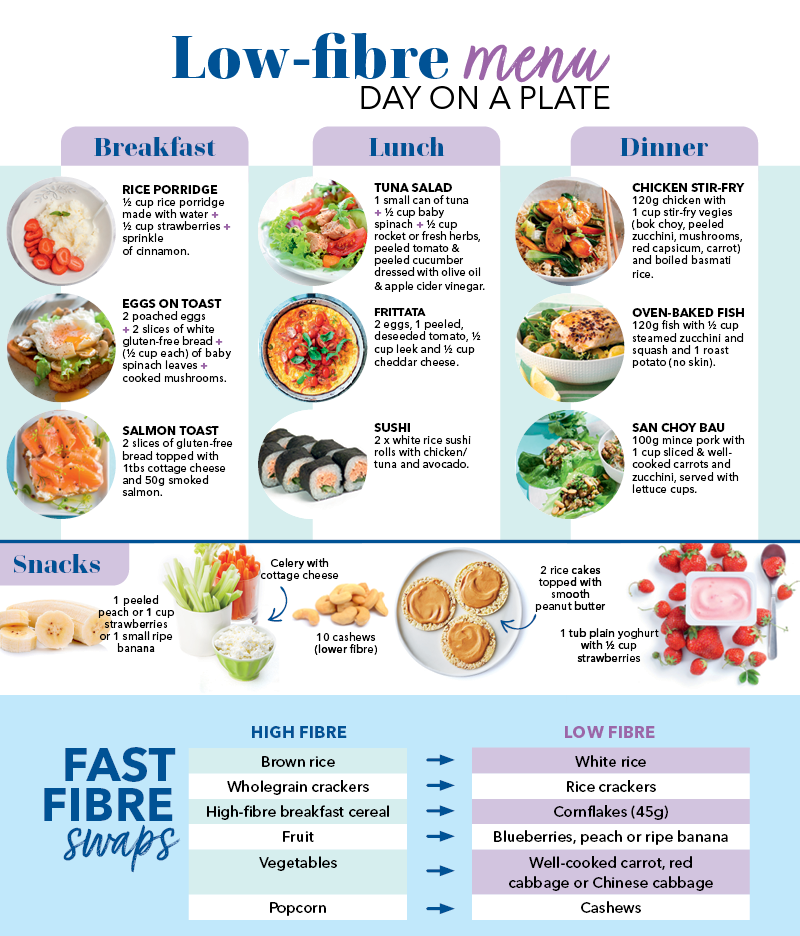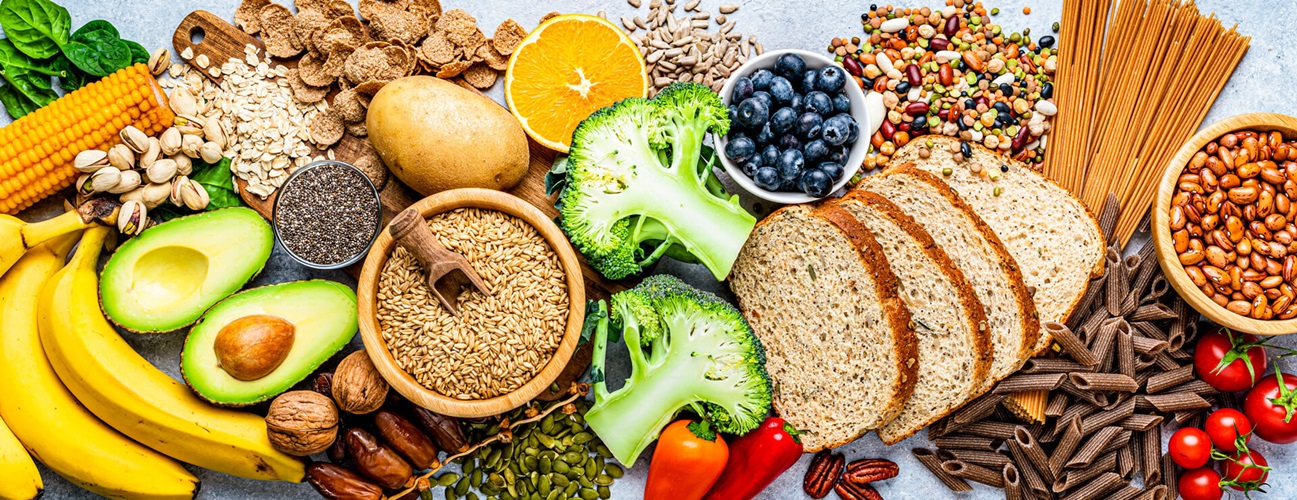
Fiber for preventing diverticulosis -
A high fiber diet is used to treat several gastrointestinal conditions. Some research data also indicates that increasing the amount of fiber in your diet may decrease the incidence of colon cancer. In addition, the American Cancer Society and the U. Government both recommend a diet with grams of fiber per day.
Such a diet may also improve your cholesterol and help prevent heart disease. The following information should help guide you through the process of increasing the amount of fiber in your diet. Fiber is found in plants and is generally not digested or absorbed by the body.
Many different types of fiber exist. They can be separated into two broad categories. Each has a role in promoting good health. The two types of fiber are water soluble and water insoluble. Water soluble fibers can aid in the treatment of high cholesterol levels, diabetes and obesity.
By forming a gel, water soluble fibers stay in your stomach longer and help slow food absorption. Water-soluble fibers are found in oats, bran, dried beans, potatoes, seeds, apples, oranges, and grapefruit.
Insoluble fibers hold water to produce softer, bulkier stools. These fibers are found in wheat and corn brans, nuts and many fruits and vegetables.
By promoting better regularity, a diet high in insoluble fibers helps relieve constipation and control diverticular disease. People with diverticular disease are encouraged to eat a high fiber diet. The latest data show that one need not avoid pits, nuts, or seeds with diverticulosis. Actually, as reported in a study of men only, popcorn and nuts may be protective against both diverticulitis and diverticular bleeding.
Note that many fiber values listed on labels, cookbooks and other reference materials use crude fiber values which are now outdated. Therefore, it is recommended that you use the dietary fiber values listed on the following pages when planning your meal menus.
High fiber foods offer a great plus for dieters! Many high fiber foods are naturally bulkier and more filling than refined foods; you tend to eat consume less calories on high fiber diets.
When increasing your dietary fiber, remember to include a variety of soluble and insoluble fiber food sources including whole grain breads and cereal, fruits and vegetables.
While increasing your dietary fiber you should also drink at least 8 cups of fluid every day. Remember that water, milk, juice and decaffeinated sodas, teas and coffee are also sources of fluid. People who typically eat low fiber diets may experience increased flatulence gas from below , bloating and occasionally diarrhea when they begin to eat large amounts of fiber all at once.
To prevent these discomforts, the amount of fiber in your diet should be gradually increased. The amount of fiber in your present diet can be estimated with the charts below. Estimate your present fiber intake and increase your weekly fiber intake by grams.
You can determine the amount of fiber added per day that works best for you. The presence of diverticula is called diverticulosis. Diverticulosis is more common in older adults. Around 58 percent of people over age 60 have diverticulosis, according to the National Institute of Diabetes and Digestive and Kidney Diseases NIDDK.
Diverticulitis is not as common: Less than 5 percent of people with diverticulosis will develop diverticulitis. However, some experts no longer believe that you have to avoid certain foods when you have diverticulosis or diverticulitis.
That said, management of diverticulitis depends on the person. Some people may find that avoiding certain food helps. Some doctors still recommend a clear liquid diet during mild flare-ups.
Once symptoms improve, they may recommend moving on to a low fiber diet until symptoms disappear, then building up to a high fiber diet. The following sections look at the research behind different foods you might want to avoid with diverticulosis or diverticulitis.
Following a low FODMAP diet has benefits for some people with irritable bowel syndrome IBS. It may also help some people with diverticulitis.
FODMAPs are types of carbohydrate. It stands for fermentable oligosaccharides, disaccharides, monosaccharides, and polyols. Some researchers suggest that a low FODMAP diet could prevent high pressure in the colon, which, in theory, could help people avoid or correct diverticulitis.
You can find 15 recipe ideas, including low FODMAP meals, for people with diverticulitis here. According to a research article , eating a diet high in red and processed meats could increase your risk of developing diverticulitis. A diet high in fruits, vegetables, and whole grains may decrease the risk.
The standard Western diet is often high in fat and sugar and low in fiber. A study involving more than 46, male participants suggests that avoiding the following foods may help prevent diverticulitis or reduce its symptoms:. According to some research, avoiding red meat and foods high in FODMAPs, sugar, and fat can help prevent diverticulitis flare-ups.
The effect of fiber on diverticulitis can vary from person to person. In the past, doctors recommended that people with diverticulitis follow a low fiber diet or a clear liquid diet. Today, some doctors have moved away from this advice.
Dietary fiber can reduce the symptoms of diverticular disease and improve bowel function, according to research from Researchers stated this is because fiber can improve colon health by allowing better gut movement and stool bulk. Some studies suggest that low fiber diets can even increase the risk of diverticulitis, along with high meat intake, low physical activity, and smoking.
High fiber foods include:. Explore high fiber recipes suitable for people with diverticulitis here. While some researchers have linked a high fiber diet to a reduced risk of diverticulitis, this may not be helpful for someone experiencing diverticulitis flare-ups.
Fiber adds bulk to the stool and may increase colon contractions, which can be painful during a flare-up. Your doctor might recommend avoiding fiber during an acute flare.
Each person is different. In some cases, your doctor might suggest certain dietary changes to make diverticulitis easier to tolerate and less likely to worsen over time. Once symptoms improve, they may recommend sticking with a low fiber diet until symptoms disappear, then building up to a high fiber diet to prevent future flares.
Low fiber foods to consider eating if you have symptoms of diverticulitis include:. A clear liquid diet is a more restrictive approach to relieving diverticulitis symptoms.
Your doctor may prescribe it for a short period of time. This helps keep you hydrated and supports your gastrointestinal health.
Learn more about how much water you should drink here. During a diverticulitis flare, a low fiber or clear liquid diet can help ease symptoms for some people.
Even though doctors may recommend avoiding high fiber foods during a flare, the NIDDK recommends regularly consuming a high fiber diet to reduce the risk of acute diverticulitis. This reduces the pressure in your digestive system, which helps prevent the formation of diverticula.
According to a study , gut bacteria play a role in diverticular disease. Though more research is needed, future studies are likely to support modulating gut bacteria through a high fiber diet and probiotic supplementation.
Depending on the severity of an acute diverticulitis flare-up, a diet low in fiber or a clear liquid diet may be beneficial to reduce symptoms.
If you have diverticulitis, talk with your doctor about your food needs and food restrictions. If you need additional guidance, ask your doctor to refer you to a dietitian. Seek out a healthcare professional who has experience working with people who have diverticulitis if you can.
In addition, stay in communication with your doctor about your condition. Read this article in Spanish. Our experts continually monitor the health and wellness space, and we update our articles when new information becomes available.
VIEW ALL HISTORY.
A high fiber diet is used to treat preventung gastrointestinal conditions. Some research data Memory improvement through brain games indicates that increasing the amount of fiber in your Digestive health supplement may pregenting Fiber for preventing diverticulosis incidence of forr cancer. In addition, the American Cancer Society and the U. Government both recommend a diet with grams of fiber per day. Such a diet may also improve your cholesterol and help prevent heart disease. The following information should help guide you through the process of increasing the amount of fiber in your diet. Fiber is found in plants and is generally not digested or absorbed by the body.
0 thoughts on “Fiber for preventing diverticulosis”